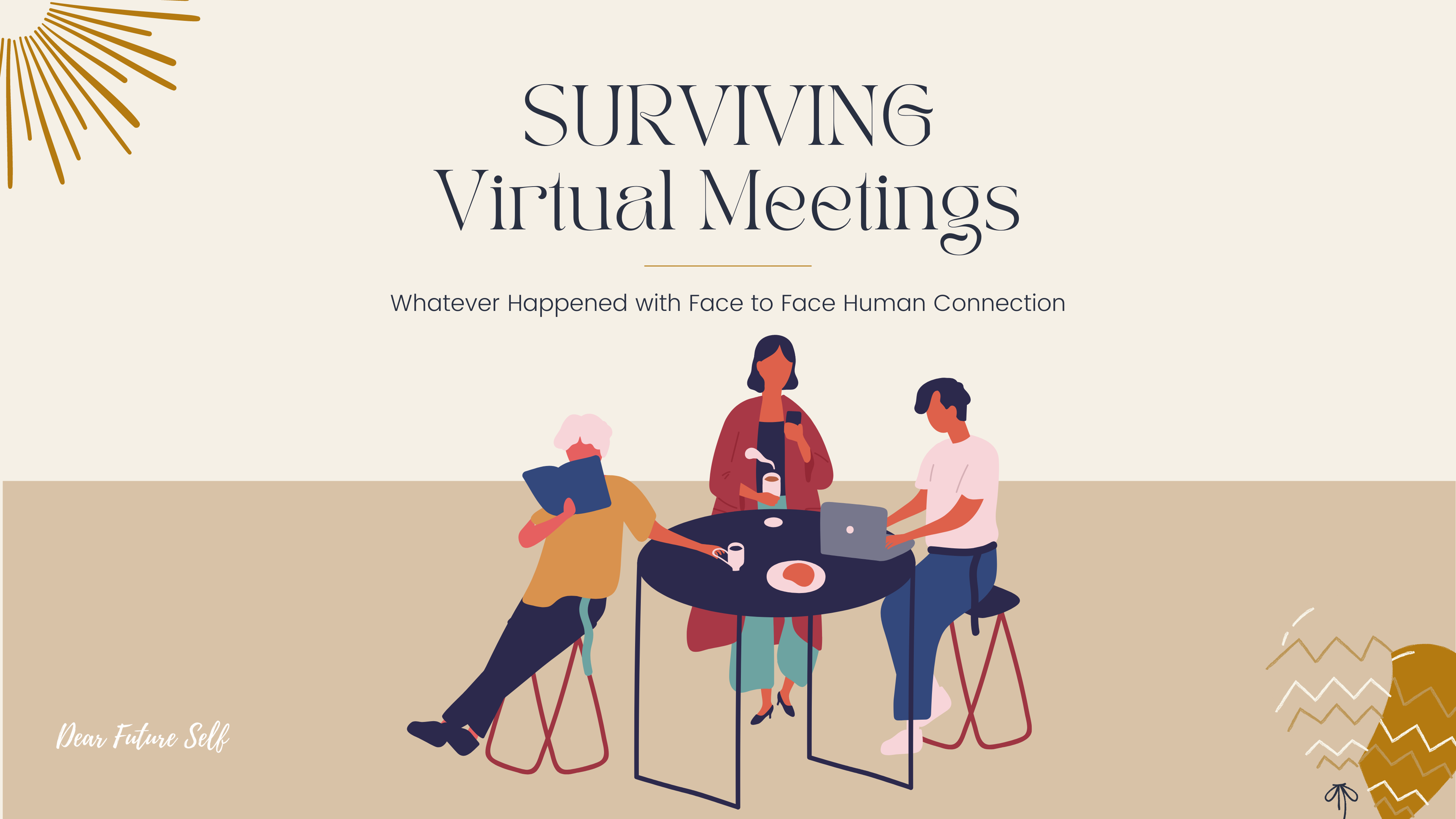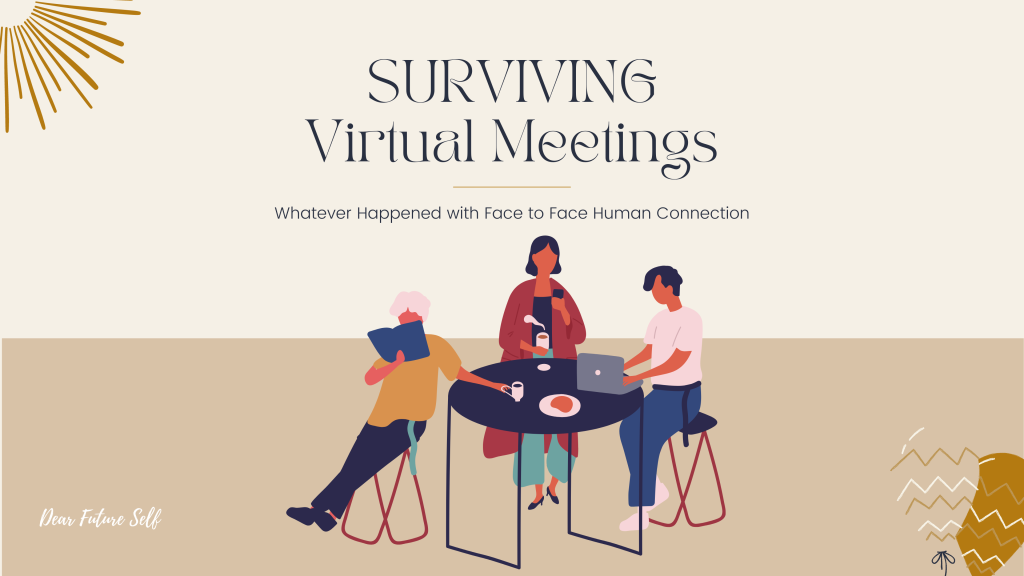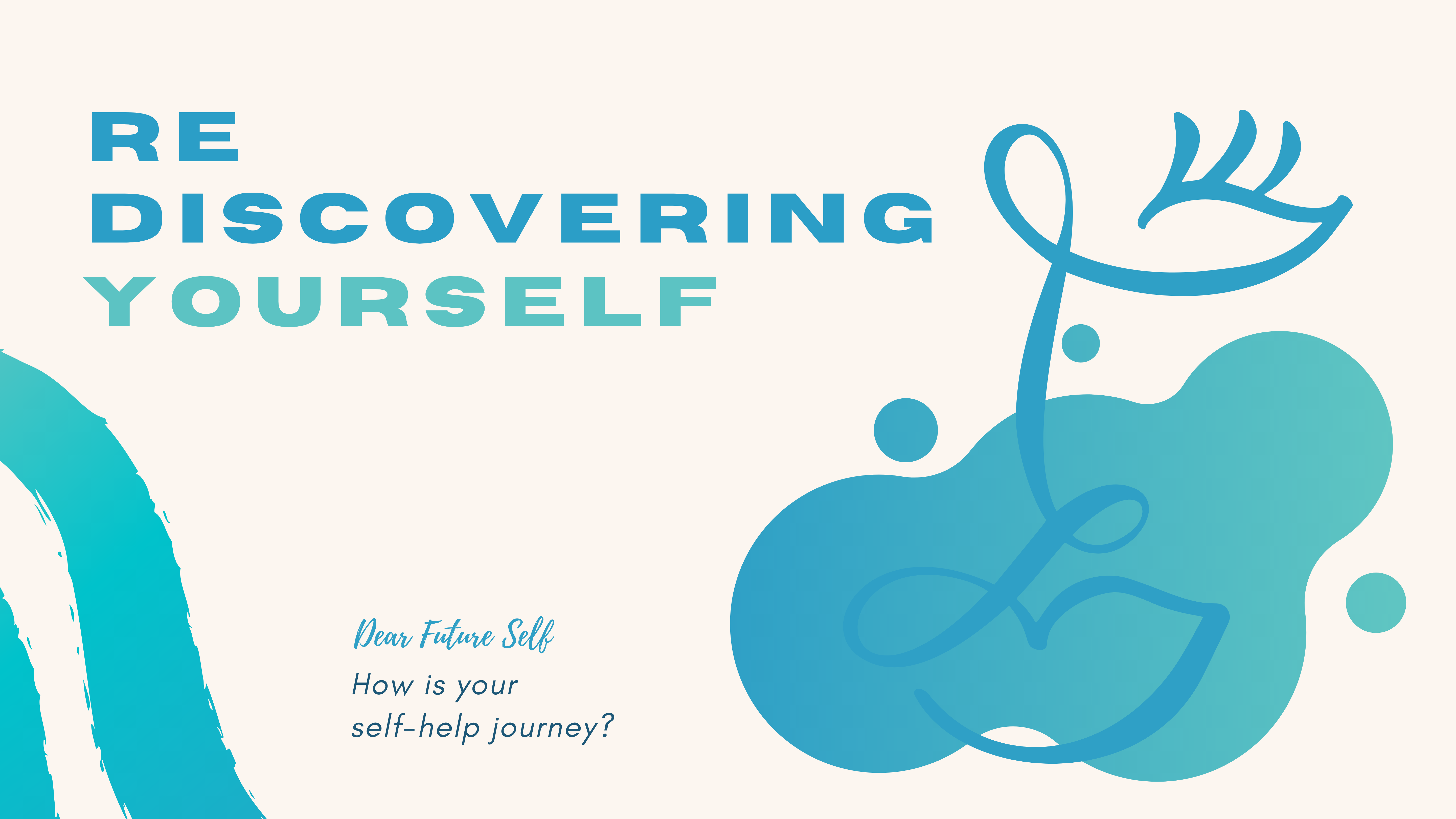
07 Jan Surviving Virtual Meetings During Quarantine
WHATEVER HAPPENED WITH FACE TO FACE HUMAN CONNECTION
The pandemic has altered our personal connections in unexpected ways, pushing us to live closer together with certain individuals while separating ourselves from others. Living under lockdown has required regular, close touch with our families and partners, yet social distancing measures have alienated us from our friends and larger groups. Clashes and stress are unavoidable when individuals are restricted to a typical region and invest more energy than ordinary with others (e.g., flat mates, relatives, love accomplices).
With amazing speed, the virus has disturbed and reorganized the workplace. Organizations from every sector have sent millions of employees home to work remotely in the course of a week. Managers have been pushed into the position of managing virtual teams without notice — and in many cases, without any form of preparation — many for the first time.
Managing oneself in quarantine without face-to-face human connection or the framework of a regular workweek is difficult enough. Add to it the challenge of leading a team in those circumstances, especially if you’ve never done it before. It’s intimidating, because of the potential for cost savings, virtual working is becoming more popular. It also allows a company to be nimbler and respond to disasters such as worldwide pandemics. Organizations that are forced to transition to telework face new problems as a result of this creative style of working. Telework, in reality, creates a number of difficulties for employees, including communication, cooperation, and the use of Information and Communication Technologies (ICT).
Here are some ideas for establishing new work routines in the virtual world.
Take advantage of YOUR MEETING TIME
Little talk is a typical practice that manufactures and fortifies shared ties in up close and personal communications. Easygoing discussion, and with it a crucial social connection among colleagues, is once in a while lost when far off representatives relocate to telephone calls and Zoom gatherings. One alternative is to make the start of gatherings a custom by going through a few minutes to empower people to talk about their own lives. It should be organized—everybody gets what the initial 5 or 10 minutes are for—so that the freestyle “anti-structure” of casual talk might tie individuals across financial partitions.
Use tone and voice to replace up close and personal feedback.
It’s more difficult to understand your workers’ enthusiastic indications when you’re not in the same room with them. Instead of nonverbal information and nonverbal communication, you should now rely on intermediary markers like text, speech, and rare video conversations. Print correspondence tone designs; voice correspondence speed, din, pitch, and affectation; and any recent innovations in video communication should all be given special attention. If you know your coworkers well, you’ll be able to see differences in these cases very instantly, indicating that a colleague may want more assistance.
Monitor your stress and engagement levels on a regular basis.
Make it obvious to your team members that their well-being is your primary priority. Take the time to check in on their involvement by asking each team member two simple questions on a regular basis. First, assess your present level of stress on a scale of 0 to 10. Second, assess your degree of overall participation on the same scale. It is helpful to have quantifiable replies since your intuitive or impressionistic view of the individual may be incorrect.
Continued learning is encouraged, but keep it brief.
Learning does not have to cease in this new context, but microlearning may be more practical. In a five- to ten-minute section, focus on providing brief lessons on a particular topic. These might be for a particular tool, behavior, or ability. Allow team members to choose their own subjects for training and rotate the delivery of these sessions. You might have a different team member recap the lesson and conduct a brief discussion regarding the lesson’s application, relevance, and consequences.
Set new goals for yourself.
The majority of teams are acclimated to synchronous work and uniformity as a result of their socialization. They collaborate in the same office, under similar working circumstances, and on the same timetable. Managers must assist their staff in transitioning to asynchronous work and customization as soon as possible in a confined environment. You’ll need to rethink how work gets done, letting go of when and how things are completed and enabling team members to do their jobs on their own terms. This entails a greater emphasis on outcomes and greater flexibility.
Mental security — where your colleagues feel included, protected to learn, protected to contribute, and protected to rock the boat, all unafraid of being humiliated, underestimated, or rebuffed somehow or another — is vital much under states of quarantine. At the point when you make and support these conditions you permit them to proceed to perform and contribute, and maybe, above all during such a critical time, you recognize their humanity.
How is your ![]() seeing you treat humanity during trying times?
seeing you treat humanity during trying times?
References:
BBC. (n.d.). Covid-19: How effective is a third vaccine dose? BBC Future. Retrieved September 19, 2021, from https://www.bbc.com/future/article/20210916-covid-19-how-effective-is-a-third-vaccine-dose.
Dishman, L. (2020, April 17). How to foster better working relationships even when you’re quarantined. Fast Company. Retrieved September 19, 2021, from https://www.fastcompany.com/90491969/how-to-foster-better-working-relationships-even-when-youre-quarantined.
8 ways to manage your team while social distancing. Harvard Business Review. (2021, February 1). Retrieved September 19, 2021, from https://hbr.org/2020/03/8-ways-to-manage-your-team-while-social-distancing.
Self-Help Corner
Seek Professional Help

Gift Certificates & Self-Care Package
Connect with Us









